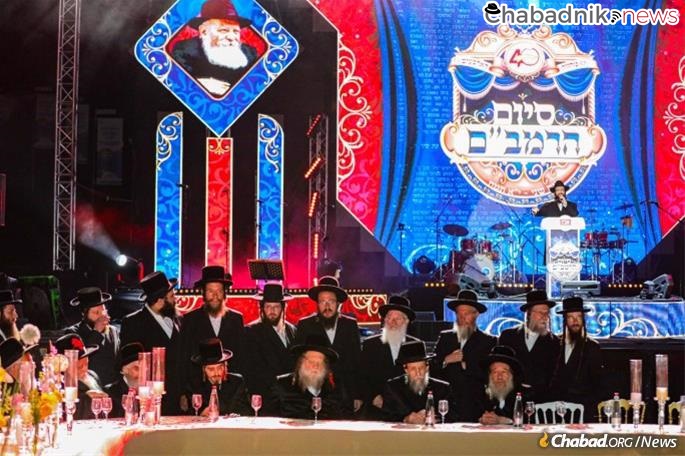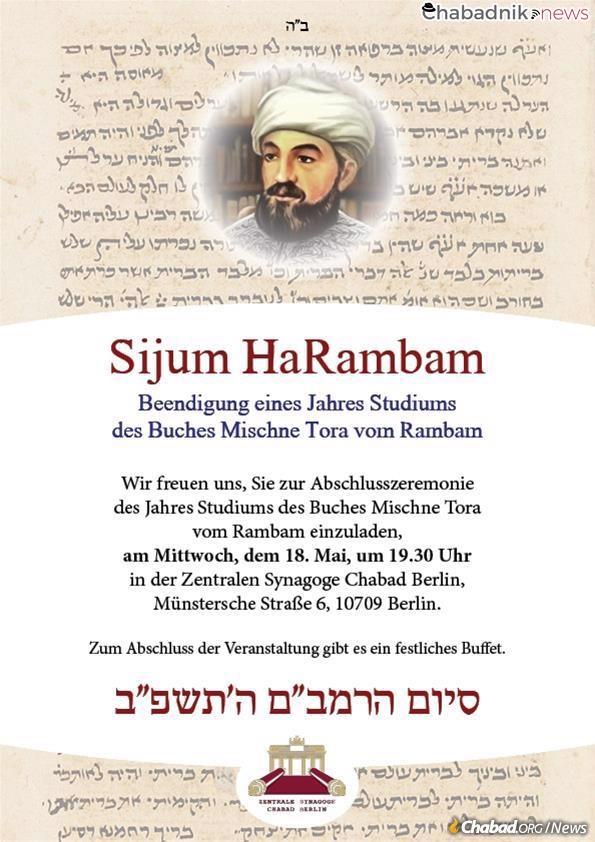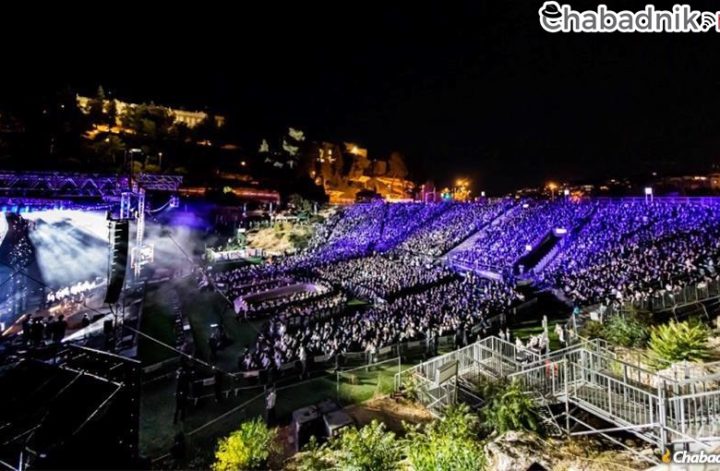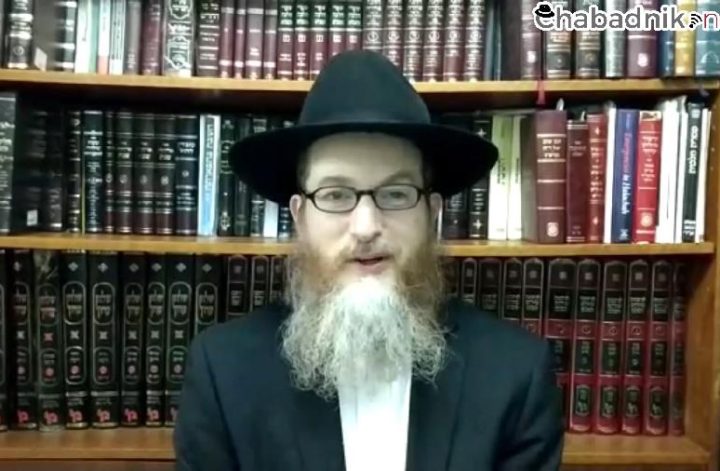41st study cycle of Mishneh Torah and Sefer Hamitzvot coincides with Lag BaOmer
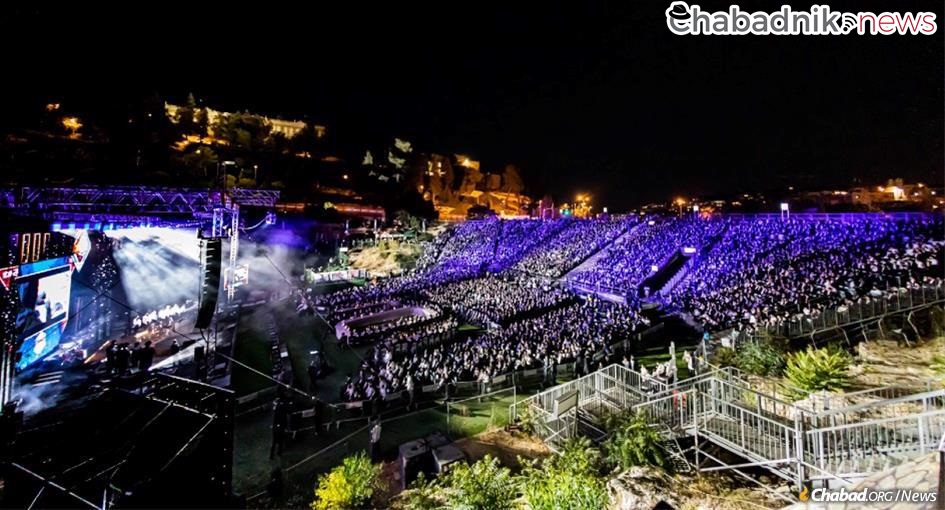
On May 19, Jews around the world will conclude a year’s worth of daily study of Maimonides’ magnum opus, Mishneh Torah, also known as Yad HaChazakah or simply, Rambam—the Hebrew acronym for Rabbi Moshe ben Maimon. This year, the conclusion of the cycle coincides with Lag BaOmer, and siyum (“conclusion”) events will be held around the world, including one outside Lubavitch World Headquarters at 770 Eastern Parkway in the Crown Heights neighborhood of Brooklyn, N.Y.
Smaller events will take place in cities around the world, like Tiberias in northern Israel, where the siyum will be held at the tomb of the Rambam, and in the Beverly Hills Hotel in Los Angeles. In Morocco, Chabad will lead a group from Casablanca to the Rambam’s home in Fez, where they will celebrate the study of Mishneh Torah and pay homage to a homegrown Torah sage.
The study program was launched by the Rebbe—Rabbi Menachem M. Schneerson, of righteous memory—in 1984. Recognizing that not everyone has the ability to study three chapters a day in time to complete the 14 books of Mishneh Torah in one year, the Rebbe created two parallel tracks: one that completes the study in three years by learning one chapter a day and another that goes through Maimonides’ compilation of Sefer HaMitzvot (“Book of Commandments”) over the period of a year.
At hundreds of children’s Lag BaOmer parades and celebrations throughout the world, children will celebrate studying the final mitzvah of the Sefer HaMitzvot, and together begin the opening words for the next year’s cycle. Each year, thousands of children compete in the International Chidon Sefer HaMitzvos, a study bee where contestants’ knowledge will be tested and showcased for the world to see.
It’s no coincidence that thousands of Jews will complete the study of Rambam on the day of Lag BaOmer. At face value, Maimonides and Rabbi Shimon bar Yochai (‘Rashbi’)—whose anniversary of passing is commemorated on Lag BaOmer—each represent different parts of Torah. Rambam is a compendium on the entirety of Jewish law, while Rashbi’s work, Zohar, is the foundational text of Jewish mysticism, the esoteric part of Torah.
In a 1985 Lag BaOmer address, the Rebbe explained that in fact, Rambam’s Mishneh Torah begins with the basic commandment to “know that there is a First Being” and at the end of his work, he concludes: “ … they will know the things that are now concealed … and will attain an understanding of their Creator to the utmost capacity of the human mind.”
However, continued the Rebbe, the entire work of Jewish law that lies between these two more esoteric lines isn’t another subject dealing with the practical, down-to-earth rules and regulations that govern Jewish life, but the practical expression of “knowing G‑d.” Knowledge of G‑d, the Rebbe taught, “ … reaches maturity only after learning through Mishneh Torah. Then, at the conclusion, you truly come to know G‑d!”
There is no separation between the esoteric parts of Torah and the practical application of the Torah’s laws, the Rebbe continued, for “ … they unite, for ‘the ‘word of the L‑rd’ means Halachah1’ which unites all aspects of the Rambam. For the Halachah reveals the word of G‑d and the will of G‑d, and thus the knowledge of G‑d is revealed.”
To find a Siyum HaRambam near you, search the Chabad Locator here.
